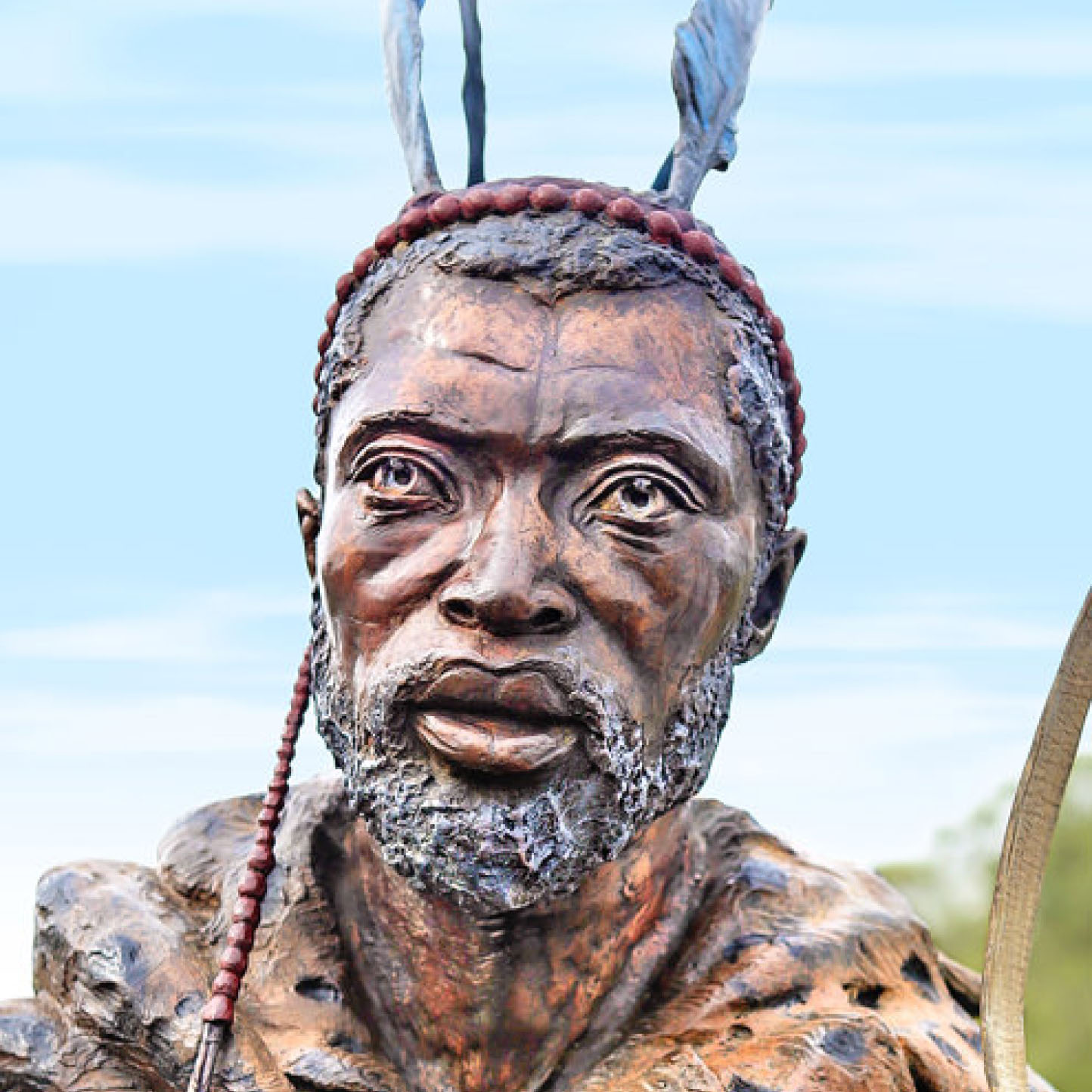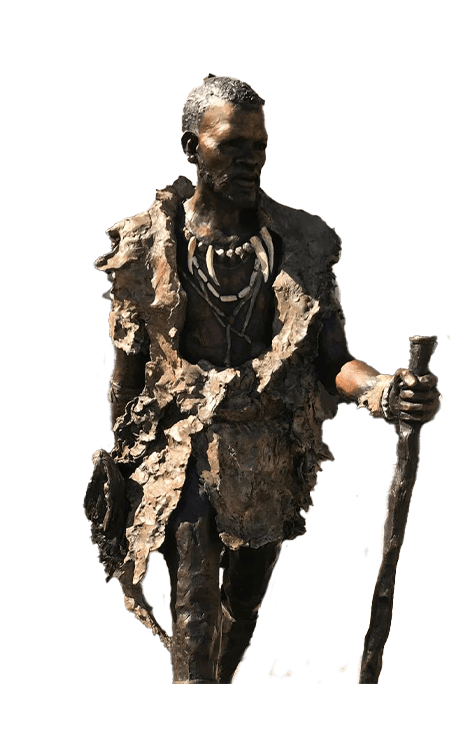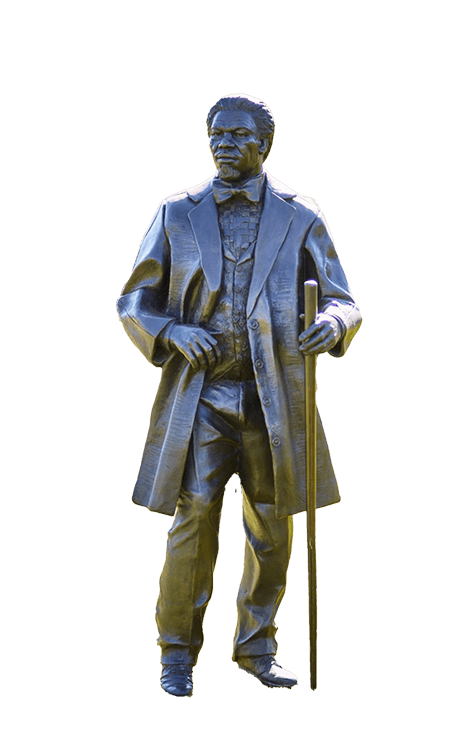


"He (Sandile himself) might die, but it should never be said that he died in peaceable time for it should be universally known that he died in the ranks fighting for the land of Rharhabe."
The Grahamstown Journal reporting a speech by King Ngqika
Paramount Chief Sandile Ka Ngqika
1820 - 1878
Chief of amaNgqika, paramount chief of the amaRharhabe Xhosa
Chief Sandile kaNgqika was born around 1820, and was the leader of amaRharhabe Xhosa, the Rharhabe branch of the western Xhosa.
Sandile was only eight years old when his father, the famous paramount chief Ngqika, died and his mother Suthu was appointed regent.
Sandile kaNgqika ascended the throne around 1840 and reportedly had difficulty in establishing his authority. He was born with a withered left leg or possibly one leg shorter than the other, which he concealed under a cloak as his disability may have been regarded as a sign of weakness. Despite this he went on to become one of the most respected of amaXhosa leaders.
During his reign, Sandile and the western amaXhosa, like so many others of their people before and after, had to resist the ever-growing pressure of white encroachment on their land. Sandile was forced to lead his people in the Seventh, Eighth and Ninth Frontier Wars against the British (1846, 1850 and 1878). He was captured in 1847 during the War of the Axe (the Seventh Frontier War) and on his release was granted land in British Kaffraria, in the Eastern Cape. Sandile would not submit to British rule, refusing to admit that his people had ever been defeated.
When the governor called him for discussions, the king said that he had made peace and that there was nothing more to discuss. Infuriated, the colonial troops struck again, moving in to destroy Xhosa houses, cattle and grain pits.
In 1878, during the Ninth Frontier War (the War provoked by Ngcayecibi), Sandile was mortally wounded in a skirmish with a detachment of Mfengu troops under British command. He died a few days later and his body was brought to a nearby military camp. He was given a military funeral at which his body was carried on eight rifles by Mfengu pall-bearers.
Different legends regarding the death of Sandile exist. It is said he was buried with a British soldier on either side to convince his followers that his spirit would not roam. Another legend states he was decapitated before burial and his skull taken to England by a certain Lieutenant Carrington as a trophy.
This was proven untrue after his remains were investigated by a team of archaeologists on request of amaRharhabe Royal House in 2005.

